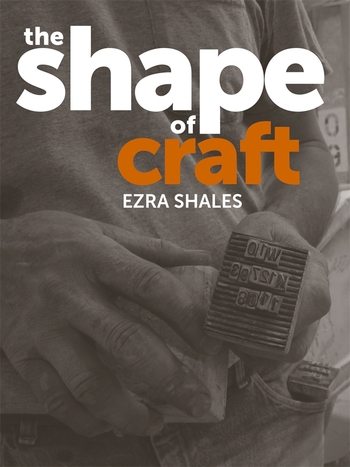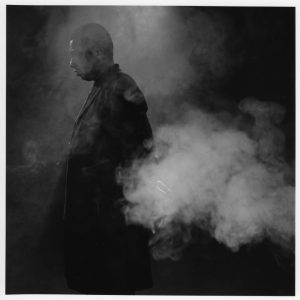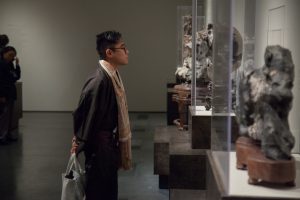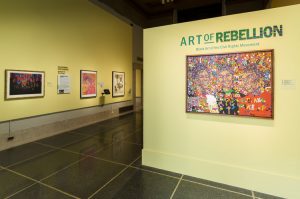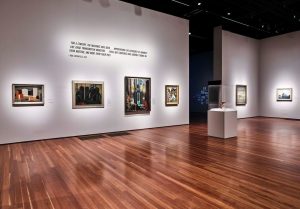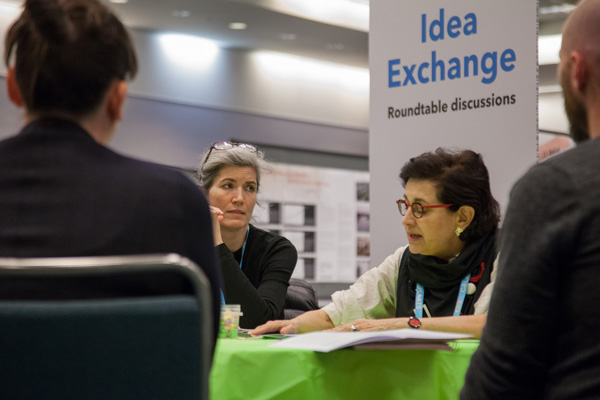CAA News Today
Elizabeth Guffey, Matt Ferranto, and Rebecca Mushtare
posted by CAA — October 22, 2018
The weekly CAA Conversations Podcast continues the vibrant discussions initiated at our Annual Conference. Listen in each week as educators explore arts and pedagogy, tackling everything from the day-to-day grind to the big, universal questions of the field.
CAA podcasts are now on iTunes. Click here to subscribe.
This week, Elizabeth Guffey, Matt Ferranto, and Rebecca Mushtare discuss “Bringing Access to Design Practice: Teaching Inclusion in the 21st Century.”
Elizabeth Guffey is Professor of Art & Design History, State University of New York at Purchase.
Matt Ferranto is Associate Professor of Design, Westchester Community College.
Rebecca Mushtare is Associate Professor of Graphic Design, State University of New York at Oswego.
New in caa.reviews
posted by CAA — October 19, 2018
Jenni Sorkin reviews The Shape of Craft by Ezra Shales. Read the full review at caa.reviews.
John A. Tyson writes about Second Sight: The Paradox of Vision in Contemporary Art by Ellen Y. Tani. Read the full review at caa.reviews.
Tania Bruguera on Decree 349, the Criminalization of the Arts in Cuba, and How You Can Help
posted by CAA — October 18, 2018
In July 2018, the Cuban government issued Decree 349, legislation targeting the artistic community on the island nation. Under the decree, all artists—including collectives, musicians, and performers—will be prohibited from operating in public or private spaces without prior approval by the Ministry of Culture. It is slated to go into full effect on December 7, 2018.
CAA released a statement of opposition to the decree last month. Recently, CAA media and content manager Joelle Te Paske corresponded with artist, activist, and 2016 CAA keynote speaker Tania Bruguera to learn more.
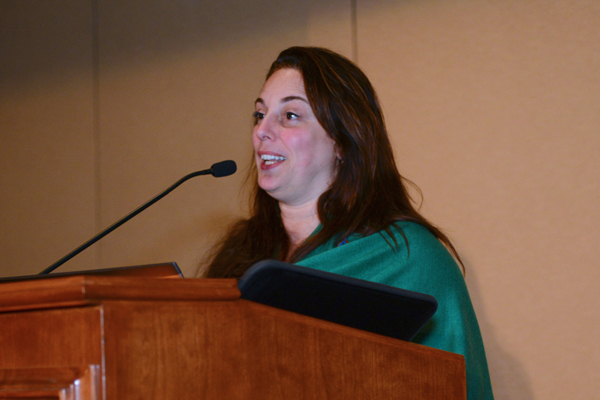
Tania Bruguera delivers the keynote address at the 2016 CAA Annual Conference in Washington, DC.
Joelle Te Paske: I’ve read that Decree 349 was signed in April and then announced without any consultation on July 10 in the government’s newspaper. How did you first find out about it?
Tania Bruguera: Decree 349 was signed by the new President of Cuba [Miguel Díaz-Canel] without consulting artists—something even the national newspaper had to admit in a recent article, which was ironically published to defend the decree. Also, it was not publicly known until almost six months after it was official, but that didn’t stop them from [moving to] apply it. It was used already with younger artists who participated in the alternative biennial when recording their artist ID registration, the only legal document that protects and allows someone to be an artist in Cuba. They also enforced it with us at the Instituto de artivismo Hannah Arendt (Hannah Arendt Institute of Activism), charging fines of $2,000 for not having permission from the Ministry of Culture to do what they call “artistic services” inside of my house. The last free space we had in Cuba was our homes—now with this law, they are also regulated spaces.
JTP: The decree is wide-ranging and applies to all cultural activity, not just visual art, is that right?
TB: Yes, they are cutting all the heads. There is a strong independent cinema movement, an alternative music scene, DIY theater, and new independent art galleries—they are all going to be gone. The government is presenting this decree as an innocent regulation, but it is in fact a muzzle to artists. We know that those permissions are not based on anything but ideological considerations, and it will be used as a blackmailing instrument. Also, it gives the government the right to decide who is and who is not an artist, what is and what is not art.
JTP: Luis Manuel Otero Alcántara, Amaury Pacheco, Iris Ruiz, Soandry Del Rio, and José Ernesto Alonso—artists who organized a protest performance on July 21—were arrested by Cuban police officials and charged with public disorder. Are tactics like this being used to intimidate artists who are speaking out?
TB: When you are protesting, when you get detained, you have already overcome your fears. In my experience, those repressive acts from the government consolidate your ideas. Confronting injustice unifies the group and makes people even more committed to fight. These detentions are designed to discourage by suggesting that your actions won’t change anything. They try to back you away from doing bigger collective demonstrations. Their absurd repression and disproportionate reaction to any small action shows how they are proving themselves wrong. But the real goal of all these engineered scare tactics is to intimidate those who are not protesting.
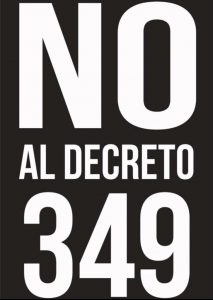
JTP: The decree specifically targets independent artists working without larger financial support structures. How do you think this will affect cultural life in Cuba?
TB: It is not a matter of finances at least for now—[the government] may use the same tactic of fake tax evasion charges that the Chinese government has used later on. Decree 349 also affects independent cinema which, comparatively, works with a larger budget. It is a matter of stopping artists from imagining, producing, and showing art independently. It is about the Ministry of Culture looking obsolete because it cannot control its artists, and so the law is intervening.
JTP: Amnesty International has written: “The lack of precision in the wording of the decree opens the door for its arbitrary application to further crackdown on dissent and critical voices in a country where artists have been harassed and detained for decades.” Would you agree with their assessment?
TB: Absolutely. This is the real goal of Decree 349—it even says that the artworks must follow ethical and revolutionary principles, but those are not described anywhere in the text nor linked to any other document to be consulted. In case you want to do your art “within the law,” there are no guidelines. “You should know better” and “Be submissive and compliant to the government’s needs of the moment” seem to be the subliminal messages.
What the artists who now have the favor of the government do not see is that the permissive line always moves. Today they are within the law, tomorrow they may be outside of the law. Everyone is a potential dissident in the eyes of the Cuban government—they do not trust anyone, and less so artists.
JTP: CAA recently put out a statement of support for the artists and activists opposed to Decree 349. What advice would you give CAA members who want to help?
TB: I want to thank CAA for its support of our cause. It makes an immense difference because the Cuban government makes a lot of its internal decisions based on how they make them look internationally. Our only protection comes from organizations and people in the world who recognize our experiences beyond all the official propaganda. It is important that people, especially those who identify as leftists and progressives, realize that Cuba today is not the one from the 1960s, where it was full of humanistic promise. Now we have a Cuba where the law is not to establish justice, but to measure the loyalty to the government.
The “Cuban legal turn,” as I call it, is an effort of the government to look “respectable” while abusing its power. They have found the perfect tool, one that is universally understood: the outlaws. No more conversations about politics or sympathies for you—now you are a common criminal. The Cuban government doesn’t recognize political prisoners. You are accused of some common crime instead of the real one, which is political. This makes it murky for people to understand what is happening and to be able to show solidarity. The conversation will shift from political rights to if anyone has ever seen the person in question taking drugs, stealing, molesting someone, or making a public scandal. Doubt then takes over your judgement [as the onlooker], and you may think twice before supporting a freedom fighter because you feel uncomfortable about the issues they are falsely accused of. That’s all the Cuban government needs from you, the ones outside of Cuba, the ones who can put pressure on them. That is why no dissident, and now no artist, will be ever accused of political motivation but rather for criminal offenses. What people need to know is that Decree 349 is not a law, but a way to stop the growing unified artistic movement for freedom of expression in Cuba. They need to understand that the law in Cuba is selectively applied to those uncomfortable to the government.
In these times, when totalitarian efforts are shamelessly growing around the world—specifically in the United States with Trump—we cannot get tired in front of injustice. We can’t forgive any injustice, no matter how small, because the next one is built on top off it.
JTP: Thank you. And to let our readers know, what are the projects you yourself are working on currently?
TB: I’ve been working on the Turbine Hall commission at the Tate Modern, which will be on view until February 24th, and on some new artworks to be shown in India, Italy, the UK, Sweden, and Mexico. I also just launched a new series of works focused on Trump and will soon do some new performances against Decree 349.
JTP: Anything else you would like people to know?
TB: Cuban artists are leading the fight for freedom of expression and we are not going to stop.You can support us by joining our petition to abolish Decree 349. Click here to sign.
Thank you!
News from the Art and Academic Worlds
posted by CAA — October 17, 2018
Want articles like these in your inbox? Sign up: collegeart.org/newsletter
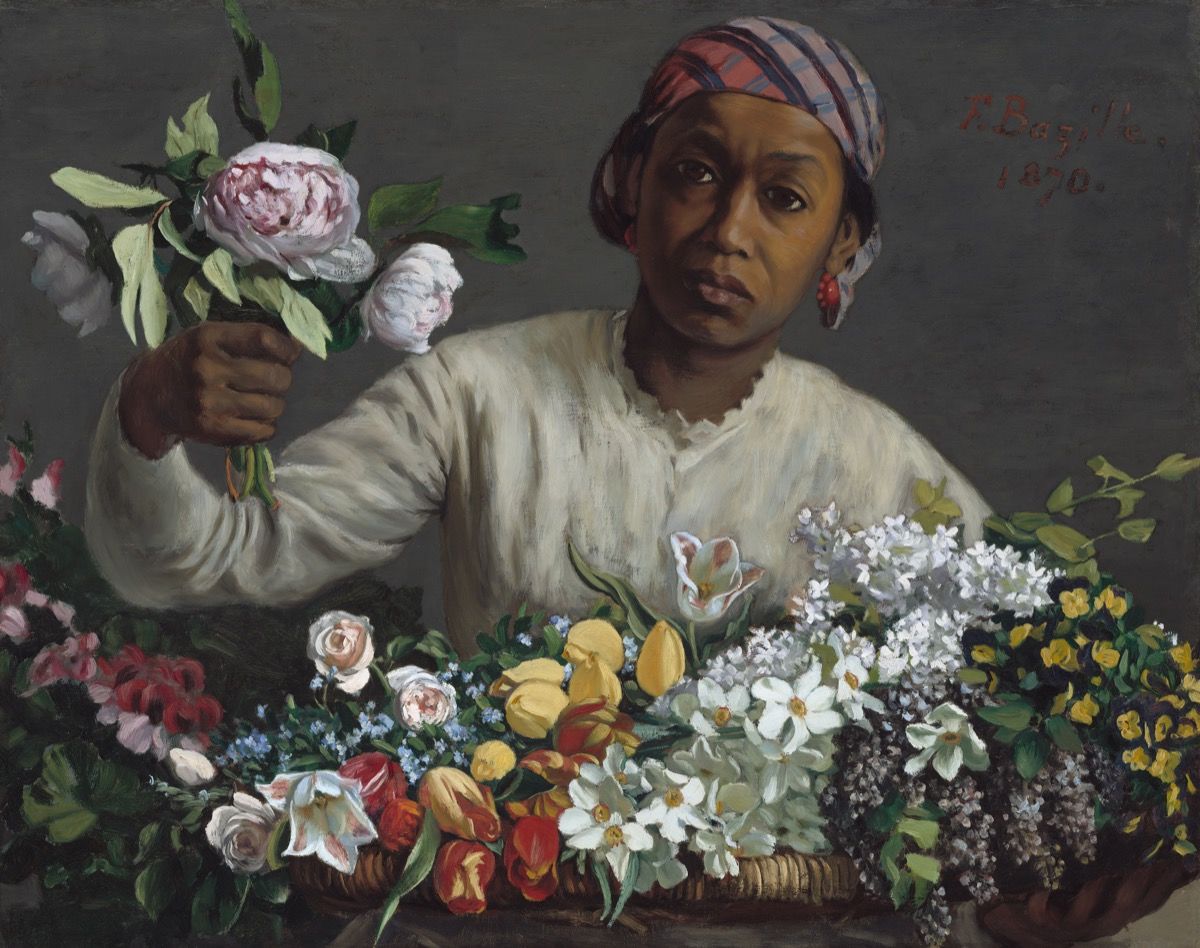
Frédéric Bazille, Young Woman with Peonies, 1870. Courtesy of the National Gallery of Art, Washington, DC, via Artsy
UCLA Study Holds Smithsonian Accountable for Better Institutional Latino Representation
One of the study’s authors, Chon Noriega, discusses the results and why they are indicative of a widespread problem in the art world. (Hyperallergic)
Seizing the Teachable Moment: Kavanaugh Confirmation
“That’s one of the key reasons for a pop-up approach: to capture energy and guide that power to good ends.” (Inside Higher Ed)
San Francisco Decrees 30 Percent of City’s Public Art to Depict Historical Women
San Francisco unanimously passed an ordinance stipulating that at least 30 percent of the city’s public art must depict nonfictional women. (Artforum)
Collector Peggy Cooper Cafritz Bequeaths More Than 600 Works to the Studio Museum and Duke Ellington School of the Arts
The bequest has been called the largest-ever donation of contemporary artworks by artists of African descent. (artnet News)
I Attended an Academic Conference and Didn’t Go to Any Sessions
We definitely recommend going to sessions. But don’t forget to take advantage of all the resources a conference can offer. (University Affairs)
Rediscovering the Black Muses Erased from Art History
Art historian Denise Murrell’s investigations into the understudied black muses of art history are the subject of her thesis, and now an exhibition. (Artsy)
Now Accepting Applications for the Art History Special Exhibition Travel Fund
posted by CAA — October 16, 2018
In August, we announced that CAA received a major anonymous gift of $1 million to fund travel for art history faculty and their students to special exhibitions related to their classwork. We’re pleased to now be accepting applications for the newly created Art History Special Exhibition Travel Fund.
The fund is designed to award up to $10,000 to qualifying undergraduate and graduate art history classes to cover students’ and instructors’ costs (travel, accommodations, and admissions fees) associated with attending museum special exhibitions throughout the United States and worldwide. The purpose of the grants is to enhance students’ first-hand knowledge of original works of art.
Applications are due by January 15, 2019.
GUIDELINES
- These awards support student and instructor travel costs incurred while visiting museum special exhibitions in the United States and worldwide.
- Graduate and undergraduate art history classes are eligible to apply for funds to attend temporary museum exhibitions (not exhibitions on permanent display) in the United States and other countries. Exhibitions on any artist, period, or area of art history are eligible for funding.
- Awards are made directly to institutions whose membership in CAA is in good standing. Applicant instructors must be individual members of CAA in good standing. Funds may only be used to travel to exhibitions that correspond directly to the content of the class. Ideally, classes will be no larger than fifteen students and planned to benefit from the special exhibition (for instance, a seminar on the subject of the exhibition).
- Awards may only be used for admission fees, travel and lodging expenses for the instructor and class members. Every attempt to attain group rates must be made.
Completed applications must include the following:
- An application form
- Instructor’s curriculum vitae
- A course description and syllabus that identifies and explains the exhibition as part of the pedagogical aim of the course
- An explanation of the instructor’s expertise in the subject matter of the exhibition
- A tentative itinerary of travel and lodging
- A budget detailing transportation and lodging expenses associated with traveling to and from the exhibition and lodging and admission costs, including an explanation of how any travel and accommodation funds in excess of the award will be raised
- A letter of support from the instructor’s department chair or dean
AWARDS
Awards will not exceed $10,000 per class, per exhibition.
ANNUAL CONFERENCE
Recipients of the award will be guaranteed a session at the subsequent CAA Annual Conference after their travel has ended. CAA will make the session available, but costs associated with attending the conference, including registration, membership, travel, and accommodation, will be the participants’ responsibility.
TIMELINE
The deadline for application materials is January 15, 2019.
Sarah Berkeley and Steve Snell
posted by CAA — October 15, 2018
The weekly CAA Conversations Podcast continues the vibrant discussions initiated at our Annual Conference. Listen in each week as educators explore arts and pedagogy, tackling everything from the day-to-day grind to the big, universal questions of the field.
CAA podcasts are now on iTunes. Click here to subscribe.
This week, Sarah Berkeley and Steve Snell discuss performance art.
Sarah Berkeley is an artist who works across media questioning cultural norms such as the 9:00 to 5:00 work day, the office environment, indoor living, gender stereotypes, and the voluntary sharing of personal data.
Steve Snell is an assistant professor in the Foundation Department at the Kansas City Art Institute whose work is inspired by American history, mythology, and the image (and experience) of adventure.
New in caa.reviews
posted by CAA — October 12, 2018
Nicholas Miller reviews two Detroit exhibitions: Art of Rebellion: Black Art of the Civil Rights Movement and Say It Loud: Art, History, Rebellion. Read the full review at caa.reviews.
Diana Strazdes reviews Cult of the Machine: Precisionism and American Art by Emma Acker. Read the full review at caa.reviews.
News from the Art and Academic Worlds
posted by CAA — October 10, 2018
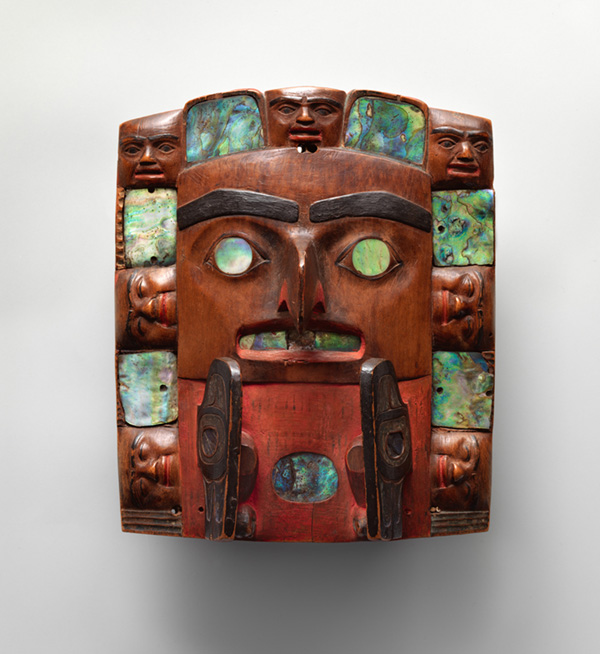
Tsimshian artist, Headdress frontlet (c. 1820–40). Photo courtesy of the Metropolitan Museum of Art, the Charles and Valerie Diker Collection of Native American Art, promised gift of Charles and Valerie Diker, via artnet News
JPMorgan Chase Gives $300,000 to Theaster Gates’s Rebuild Foundation in Chicago
The foundation will put the funds toward the final phase of renovation for its Arts and Innovation Incubator. (ARTnews)
‘Conventional Narratives of History Are Being Expanded’: Native Art Is Now Appearing in the Met’s American Wing
A new exhibition at the Metropolitan Museum of Art marks the first time the museum has held a show of Native American art in its American wing. (artnet News)
Tania Bruguera on Transforming Tate Modern’s Turbine Hall
“We live in a time when we need to defend complexity and the right to be complex.” (Apollo Magazine)
Tackling Harassment and its Roots in Scholarly Communication: Practical Steps for Organizations and Individuals
How can we move to the practical level of making real change as individuals? (Scholarly Kitchen)
The Morality Wars: Should Art be a Battleground for Social Justice?
“The defining objective of the civil rights movement and the women’s movement and the gay rights movement was equality, sure, but also motion—forward, upward, outward. The country has never looked both more and less like what these movements aspired to achieve.” (New York Times Magazine)
Diversity Fatigue Is Real
It is the very people who are the most committed to doing diversity work who are experiencing “diversity fatigue.” (Chronicle of Higher Education)
Submit a Proposal for Idea Exchange at CAA 2019
posted by CAA — October 09, 2018
We launched Idea Exchange at the 2018 Annual Conference in Los Angeles in response to members who expressed an interest in holding informal roundtable discussions on topics ranging from fellowship applications and gallery representation to student engagement in the classroom and preserving women artists’s legacies.
We’re offering Idea Exchange again in 2019 and we’re looking for CAA members to serve as discussion leaders.
Propose a topic that you would like to discuss with your colleagues for a sixty-minute roundtable at the conference. It can relate to professional development, teaching, or fellowships. Suggest a discussion around current events, such as the debate surrounding Confederate monuments or the #MeToo movement in the arts. Be creative. The conversations are meant to be lively and engaging. Please submit your Idea Exchange proposals by December 14, 2018.
In order to submit an Idea Exchange topic, you will need to have your member ID and password ready. If you do not have an individual ID number and password or you do not know it, please contact member services by email at membership@collegeart.org or by phone at 212-691-1051, ext. 1.
Idea Exchange will be held in the Cultural and Academic Network Hall during the following times:
Thursday, February 14: 10:30 AM; 12:30 PM; 2:00 PM; 4:00 PM
Friday, February 15: 10:30 AM; 12:30 PM; 2:00 PM; 4:00 PM
Saturday, February 16: 10:30 AM; 12:30 PM
For more information on Idea Exchange, contact Alison Chang at achang@collegeart.org or by phone at (212) 392-4436.
CAA Announces Exclusive Member Trip to Japan
posted by CAA — October 09, 2018
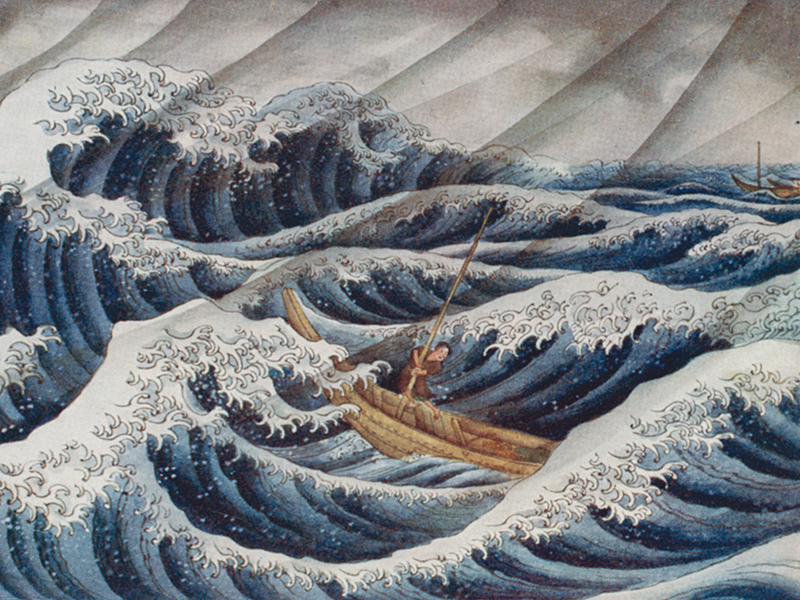
Makino Heinei gets blown away in the storm, an illustration from Ancient Tales & Folklore of Japan by R. Gordon Smith, 1908
Understanding Japan for CAA – Arts & crafts, history, religion & traditions
May 9-20, 2019
CAA is pleased to partner with Martin Randall Travel to offer an exclusive trip for scholars and artists to Japan.
“Understanding Japan for CAA – Arts & Crafts, History, Religion & Traditions” will take place May 9-20, 2019, and will be led by independent Japan scholar and CAA lifetime member, Pauline Chakmakjian.
Designed specifically for CAA members, this extensive tour will take visitors to the heart of Japan to explore its art and architecture, the continuing work of its craftspeople, its natural beauty and heritage, and modern Japan and its position in the world. Beginning in Tokyo, Understanding Japan for CAA promises to be a remarkable opportunity to engage with many aspects of the country. The tour features:
- Modern architecture in Tokyo and the contrasting traditional buildings in Shirakawa and Takayama.
- Stunning Buddhist temples and gardens in Kyoto, and the legendary, ancient shrine at Izumo.
- Traditional arts and crafts in Kanazawa.
- Overnights in a traditional ryokan (Japanese inn) and an onsen hotel (with natural hot spring bathing options).
- An exploration of the Japanese character in history and today, with specialist lectures by Pauline Chakmakjian.
More about Pauline Chakmakjian

Pauline Chakmakjian is an independent lecturer on a variety of subjects related to the history, fine arts and culture of Japan. She lectures for private member societies, corporate entertainment, private homes, universities, cruises, charities and other related organizations including lecture tours in Australia and New Zealand. She holds a BA in English Literature during which she was also awarded a Merit Scholarship in Fine Art, a Diploma in Law, an MA in Modern French Studies and is a member of the Honourable Society of the Inner Temple. Pauline was elected onto the Board of the Japan Society of the United Kingdom from 2008–2014 and the Japan Society of Hawaii from 2015–2017. In 2014, Pauline was appointed a Visit Kyoto Ambassador by the Mayor of the City of Kyoto.
A portion of the proceeds from every trip will support CAA and its mission to advance art and design.



